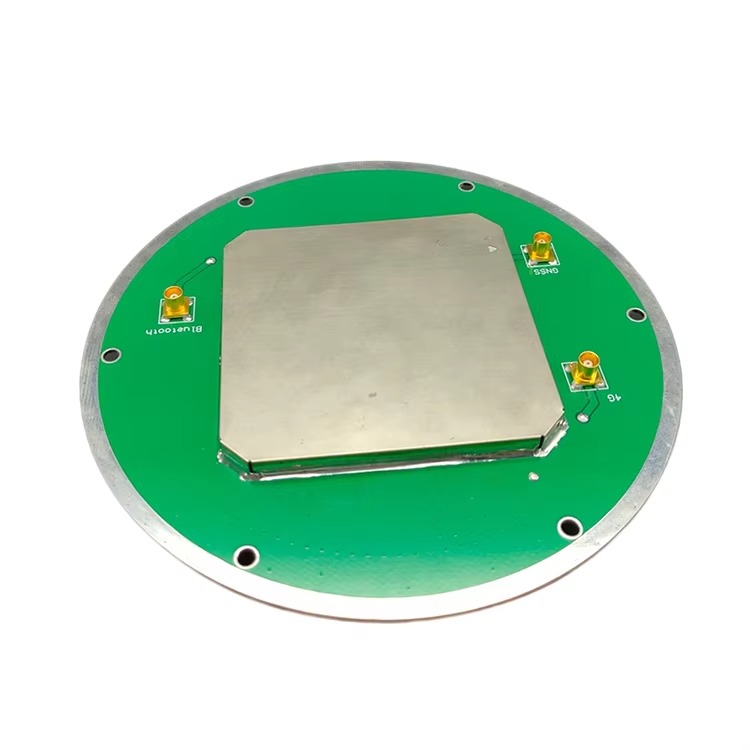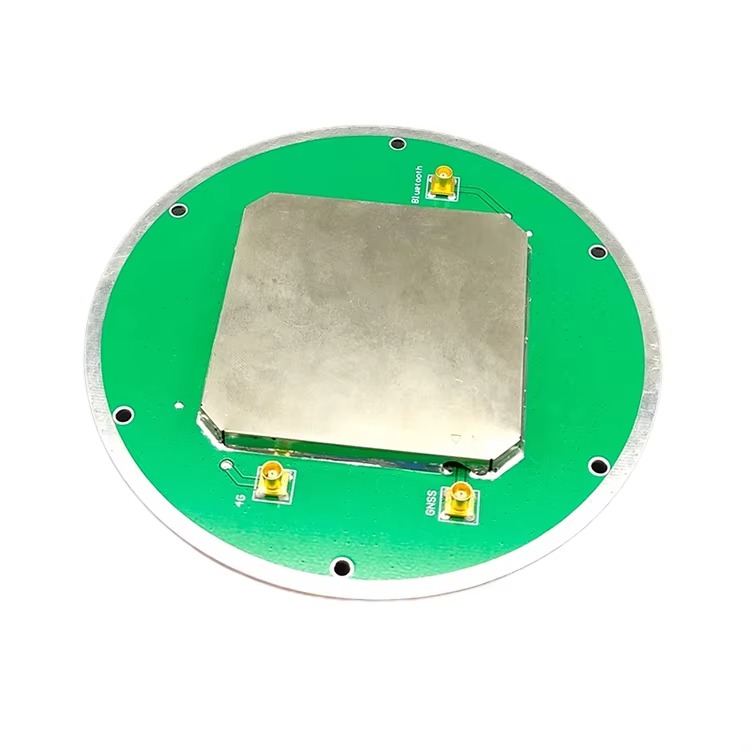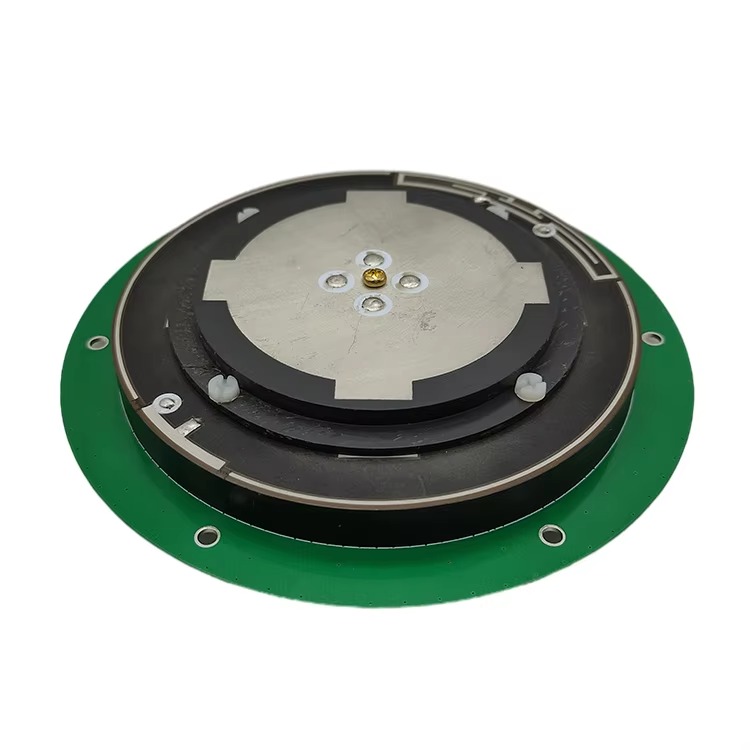Applications
RTK GNSS antennas for drone-based surveying are deployed across industries that require high-precision aerial data:
Construction and Infrastructure Monitoring: Drones equipped with RTK antennas are used to survey construction sites, track progress, and compare as-built conditions with design plans. The centimeter-level accuracy enables early detection of deviations, such as misaligned foundations or incorrect grading, reducing rework costs. For example, a weekly drone survey of a highway construction site can generate 3D models that show how the project aligns with specifications, allowing managers to address issues promptly.
Agriculture and Precision Farming: In agriculture, RTK-enabled drones map crop health, soil variability, and irrigation patterns. Farmers use these maps to apply fertilizers, pesticides, or water with pinpoint precision, optimizing resource use and yields. The antennas ensure that field boundaries and crop rows are mapped accurately, even in large, irregularly shaped fields.
Mining and Quarrying: Mining operations use RTK drone surveys to measure stockpiles, monitor pit walls for stability, and track excavation progress. The high accuracy of RTK data allows for precise volume calculations of ore or waste, improving inventory management and compliance with environmental regulations. Drones can safely survey active mining areas, reducing the need for workers to enter hazardous zones.
Environmental Monitoring and Conservation: RTK-equipped drones map wetlands, forests, and coastal areas to monitor habitat changes, erosion, or pollution. For example, conservationists use drone surveys to track deforestation rates in tropical regions, with RTK accuracy ensuring that changes in tree cover are measured precisely over time. Drones also survey flood zones after natural disasters, providing emergency responders with detailed maps of affected areas.
Land Surveying and Cadastre: Land surveyors use RTK drones to create boundary maps, topographic surveys, and cadastral records. The technology reduces the time required to survey large parcels of land, especially in rural or remote areas, while delivering accuracy comparable to traditional ground surveys. This is particularly valuable for land disputes or property development projects, where precise boundary definitions are critical.
Future Trends
The evolution of RTK GNSS antennas for drone surveying is driven by advances in miniaturization, connectivity, and sensor integration:
Miniaturization and Integration: Future antennas will be even smaller and lighter, enabling integration with compact drones and reducing payload impact. Manufacturers are exploring new materials, such as flexible electronics and metamaterials, to create ultra-thin antennas that can be mounted on drone wings or bodies without disrupting aerodynamics.
AI-Powered Signal Optimization: Artificial intelligence (AI) algorithms will enhance antenna performance by predicting and mitigating signal obstructions. For example, AI could analyze terrain data to anticipate when the drone will fly into a signal shadow (e.g., behind a mountain) and adjust gain or switch constellations proactively to maintain accuracy.
Multi-Sensor Fusion: RTK GNSS antennas will increasingly work with complementary sensors, such as LiDAR, IMUs, and cameras, to create a unified positioning system. This fusion will compensate for GNSS signal loss by using LiDAR or visual odometry to estimate position, ensuring continuous high accuracy even in challenging environments.
5G and LEO Satellite Integration: 5G networks will enable faster transmission of RTK corrections, extending network RTK coverage to remote areas. Low Earth Orbit (LEO) satellite constellations (e.g., Starlink, Planet) will provide stronger, more reliable GNSS signals, reducing dependence on ground-based base stations and improving performance in polar regions or deep canyons.
Autonomous Drone Swarms: RTK GNSS antennas will support coordinated flights of multiple drones, or swarms, which can survey large areas more quickly than a single drone. Each drone in the swarm will use precise RTK positioning to maintain formation and avoid collisions, while synchronizing data collection for seamless mapping.
Conclusion
RTK GNSS antennas have transformed drone-based surveying by enabling centimeter-level accuracy in aerial mapping, a capability that has redefined efficiency and precision across industries. Their compact, lightweight design, combined with multi-constellation support and stable phase performance, addresses the unique challenges of drone flight, from payload constraints to dynamic signal conditions. By reducing reliance on ground control points and enabling real-time data validation, these antennas have made drone surveying a viable alternative to traditional methods, especially in remote or inaccessible areas.
While challenges such as signal obstruction, vibration interference, and base station dependence persist, ongoing advancements in miniaturization, AI, and sensor fusion are addressing these limitations. Future RTK GNSS antennas for drones will be smaller, smarter, and more integrated, further expanding their role in construction, agriculture, environmental monitoring, and beyond.
As drone technology continues to evolve, RTK GNSS antennas will remain a critical component, ensuring that aerial surveying missions deliver the high-precision data needed to drive informed decision-making. Their ability to bridge the gap between satellite signals and actionable geospatial insights will continue to unlock new possibilities in mapping, monitoring, and management of the world’s natural and built environments.




































































 Language
Language
 En
En Cn
Cn Korean
Korean

 Home >
Home > 







 18665803017 (Macro)
18665803017 (Macro)













